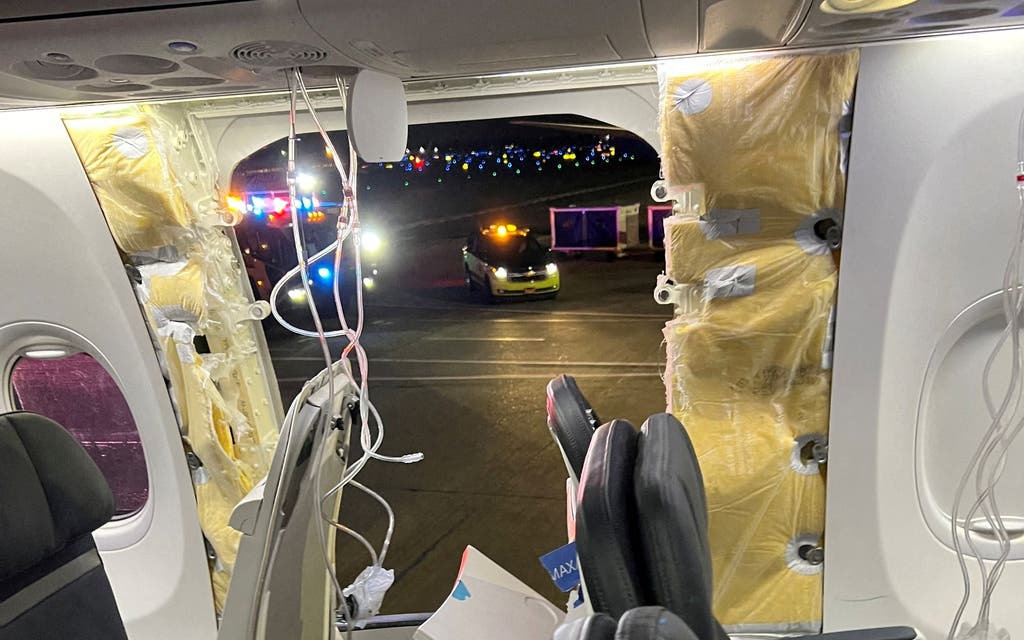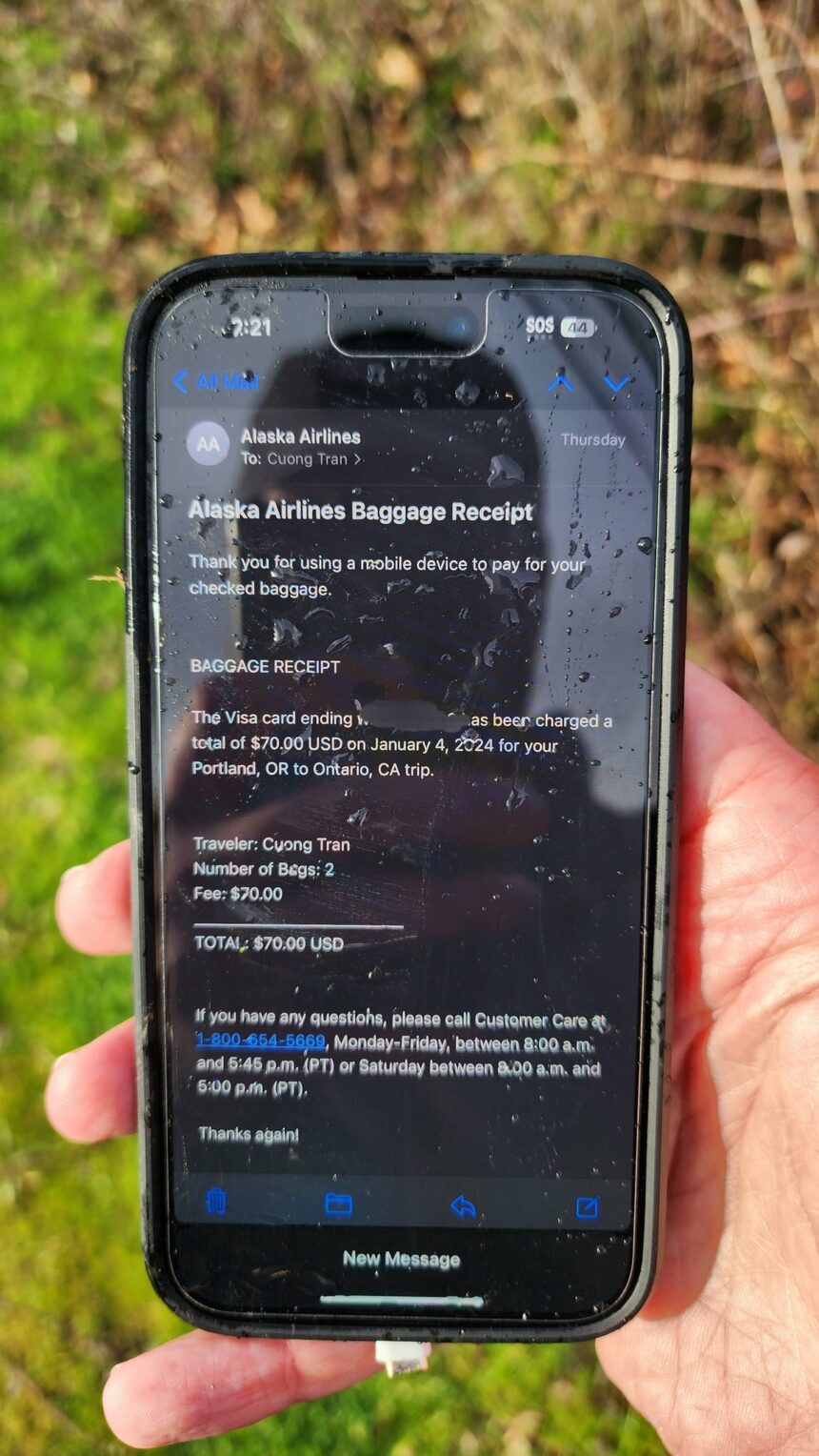Game designer Sean Bates stumbled upon a remarkable discovery on Sunday—an iPhone that had fallen from Alaska Airlines Flight 1282. The incident occurred when a part of the fuselage of the Boeing 737 Max 9 detached explosively shortly after takeoff. Despite the dramatic event, the found iPhone was remarkably undamaged, still functional, and even had the end of a sheared-off charging cable plugged in.
Sharing his discovery, Bates posted pictures on Sunday afternoon, capturing the iPhone in a bush. One of the images revealed the phone’s screen, displaying an open email with a baggage receipt. This unexpected find adds a unique twist to the narrative surrounding the incident.
The incident, which prompted the plane to turn around and make an emergency landing at Portland International Airport, also caught the attention of the National Transportation Safety Board (NTSB). During a Sunday briefing, the NTSB confirmed that two phones, including the one discovered by Bates, were recovered after falling from the Boeing 737 Max 9. One phone was found on the side of the road, while the other landed in a yard. Additionally, a fuselage plug from the aircraft was discovered in a Portland school teacher’s backyard.
The question arises: How could the iPhone survive such a fall? An understanding of terminal velocity provides part of the explanation. Terminal velocity is the maximum speed an object can reach before the resistance of the medium it’s falling through—in this case, air—balances out gravity. Wired published a story in 2011 about an iPhone 4 that survived a 1,000-foot fall from a plane, further highlighting the phenomenon.
The report emphasized that the landing surface and the object’s deceleration upon impact are crucial factors. In this instance, the wooded area where the iPhone landed likely played a role, as the softer ground would displace more upon impact compared to a harder surface like concrete. Additionally, the fact that the iPhone 4 was in a protective case likely contributed to its survival, a factor shared with the recently discovered iPhone.

In response to the incident, the Federal Aviation Administration (FAA) took action on Saturday, grounding 171 Boeing 737 Max 9 planes pending an investigation. The move aimed to determine whether the incident was indicative of a broader safety issue. On the same day as the incident, The Seattle Times reported that Boeing had sought a safety exemption for an unrelated defect that had the potential to cause catastrophic engine damage.
As the investigation unfolds, the curious case of the surviving iPhone adds a layer of intrigue to the larger safety concerns surrounding Boeing’s 737 Max 9 aircraft.








